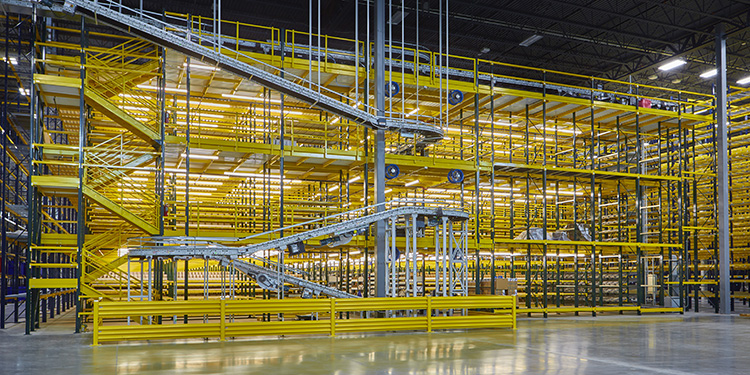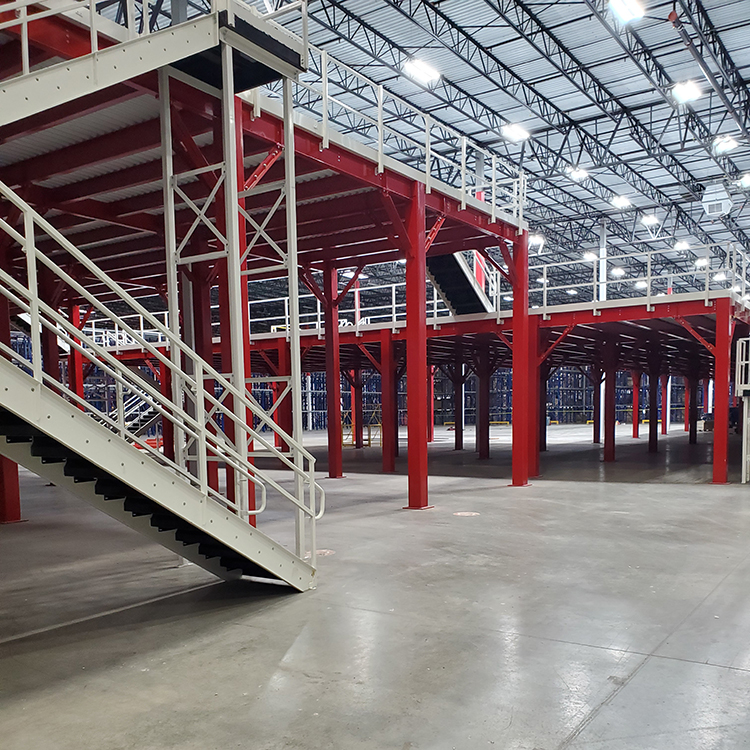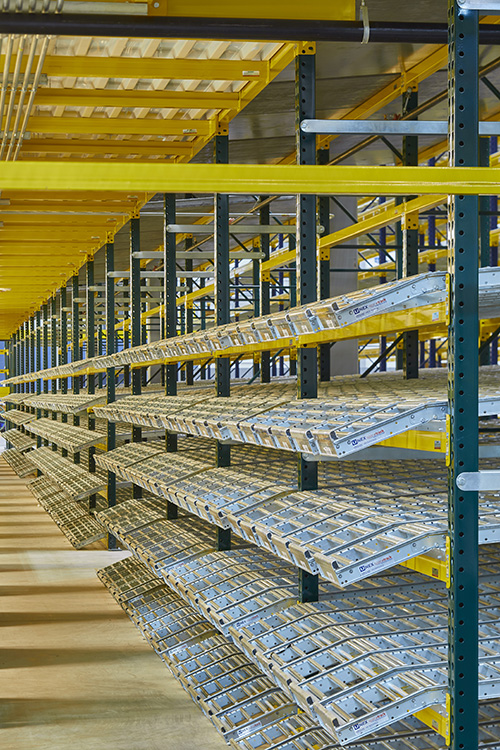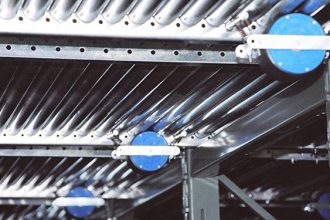Last Mile Delivery: How To Arrange Rack For Success

E-commerce sales continue to grow. The latest figures from the U.S. Census Bureau found that online shopping increased 7.6% year-over-year in Q3 2023, accounting for 15.6% of total sales. As a result demand for last mile delivery — the movement of an order from warehouse to recipient — is growing as well. Projections from Allied Market Research anticipate the last mile delivery market to reach $288.9 billion by 2031. With more than 50% of total shipping costs attributed to last mile delivery, minimizing costs while boosting efficiency is critical. Therefore, when outfitting an operation to support last mile delivery, how the rack is arranged can contribute to success in meeting those goals.
Retailers are the primary users of last mile delivery, noted Jim Augustyniak, Regional Sales Manager at RMI member Steel King. “With the growth of e-commerce, facilities that previously received and shipped goods exclusively on pallets have had to evolve,” he explained. “That said, there’s a huge breadth of diversity in retail. Last mile delivery could mean handling small parcels, refrigerated or perishable groceries, or large items like refrigerators or sofas.”
That shift from handling pallets to handling cases or individual items of all sizes demands a different approach to rack layouts. “Many companies aren’t able to design and open a new facility that accommodates this shift in handling needs,” Augustyniak continued. “That means an operation likely needs to make modifications to its current storage rack to adapt to last mile delivery demands.”

How to Use Racking to Increase Storage Density
Regardless of what the shipments are, they all need loading onto a delivery vehicle in a sequence that replicates the driver’s route. That calls for a separate staging area located between the shipping dock and the picking zones and pack-out stations.
“A traditional dock area is unlikely to have enough square footage for the sorting and sequencing of last mile deliveries,” Augustyniak said. “That means a facility needs to carve out space to create this staging zone. One way to do that is to compress existing storage areas by increasing their density.”
There are a variety of high-density racking solutions available that reduce the number of aisles required by standard selective rack. Certain rack types are a better match for different inventory profiles than others, Augustyniak observed. Options include:
Drive-In and Drive-Through Racks
These integrate uprights and rails upon which two or more pallet loads rest. “These racks are ideal for storing large quantities of the same product,” he explained. “Drive-in racks have one forklift entry point for placing and removing pallet loads. This creates last-in/first-out (LIFO) inventory management. Whereas in drive-through racking, there is forklift entry and exit access for every row. That enables first-in/first-out (FIFO) product handling.”
Pushback Rack
This rack style incorporates a series of nested carts that roll on top of inclined rails inside the structure. A forklift loads pallets into each lane in the racking (and removes them) from the front. Each new pallet placed in the rack pushes the pallets behind it further back into the racking. “Pushback rack is best suited for LIFO inventory handling,” continued Augustyniak. “Removing the first pallet prompts the others to slide forward in its place.”
Pallet Flow Rack
Sometimes called “gravity flow,” these racks can hold up to 20 pallets per lane. They incorporate downward-sloping gravity wheel or roller lanes. “Here, forklifts load pallets from the back and remove them from the front for FIFO inventory management,” he added.
Maximize Cubic Storage Volume by Leveraging Overhead Space
Another approach to creating a last mile delivery staging area by reducing the square footage occupied by racking is to store inventory higher up.
“While not possible in facilities with low ceilings, there are many buildings with a lot of unused open space between the top of the rack and the ceiling,” Augustyniak said. “Utilizing taller rack can create more storage positions overhead.”
Accessing those higher elevation storage locations will likely require different forklifts with taller reach heights, he cautioned.
Another option might be to build a mezzanine or industrial work platform overhead, above the existing rack. “This creates a second level within the building. Installing additional racking in this upper level can also create usable storage where none existed before,” noted Augustyniak.
Alternately, converting existing rack to — or installing new — pick modules and rack supported platforms can further create additional square footage. Integrated into the racking, these systems help expand storage capacity or create new overhead areas for order picking and fulfillment.

Create Forward Pick Zones
In addition to modifying the rack layout to accommodate last mile delivery staging, analyzing inventory to ensure optimized storage can help an operation improve efficiency and capacity.
“Conducting an inventory analysis will help determine which products move through a facility faster,” Augustyniak explained. “Slower moving items should be stored in rack that’s farthest away from the shipping dock. Faster moving items should be closer for quicker, easier access.”
Existing selective rack can store inventory to replenish forward pick zones. The fastest moving product — particularly those picked by the case or the piece — can be picked directly from carton flow rack systems. Consisting of wheels or rollers, these tracks mount directly to the beams of existing pallet rack. They segregate small, hand-loaded inventory into distinct lanes for organization and storage density while increasing picker ergonomics and accuracy.
“Ultimately, there are a lot of different ways to arrange the racking within a last mile delivery operation,” concluded Augustyniak. “The members of RMI have a lot of experience in helping facilities successfully make the transition from exclusively handling pallets to handling individual cases and eaches. Don’t hesitate to reach out for consultations, insights, and recommendations.”
More Last Mile Delivery Rack Layout Options
Looking for more ideas for optimizing a last mile delivery operation’s rack layout? RMI offers the publication, “Considerations for the Planning and Use of Industrial Steel Storage Racks,” to help. For more information, visit mhi.org/rmi.


